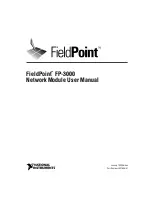
100
[RouterB-bgp] peer 20.1.1.2 as-number 200
[RouterB-bgp] import-route ospf
[RouterB-bgp] import-route direct
[RouterB-bgp] quit
# Configure Router C.
[RouterC] bgp 200
[RouterC-bgp] peer 20.1.1.1 as-number 100
[RouterC-bgp] import-route ospf
[RouterC-bgp] import-route direct
[RouterC-bgp] quit
After the configuration, execute the
display ip routing-table
command on each device. The output
shows that each device has learned the routes to the outside of the AS. Take Router A as an
example:
[RouterA] display ip routing-table
Routing Tables: Public
Destinations : 10 Routes : 10
Destination/Mask Proto Pre Cost NextHop Interface
1.1.1.9/32 Direct 0 0 127.0.0.1 InLoop0
2.2.2.9/32 OSPF 10 1 10.1.1.2 GE3/1/1
3.3.3.9/32 O_ASE 150 1 10.1.1.2 GE3/1/1
4.4.4.9/32 O_ASE 150 1 10.1.1.2 GE3/1/1
10.1.1.0/24 Direct 0 0 10.1.1.1 GE3/1/1
10.1.1.1/32 Direct 0 0 127.0.0.1 InLoop0
20.1.1.0/24 O_ASE 150 1 10.1.1.2 GE3/1/1
30.1.1.0/24 O_ASE 150 1 10.1.1.2 GE3/1/1
127.0.0.0/8 Direct 0 0 127.0.0.1 InLoop0
127.0.0.1/32 Direct 0 0 127.0.0.1 InLoop0
4.
Configure MPLS TE basic capabilities, and enable RSVP-TE and CSPF
# Configure Router A.
[RouterA] mpls lsr-id 1.1.1.9
[RouterA] mpls
[RouterA-mpls] mpls te
[RouterA-mpls] mpls rsvp-te
[RouterA-mpls] mpls te cspf
[RouterA-mpls] quit
[RouterA] interface GigabitEthernet 3/1/1
[RouterA-GigabitEthernet3/1/1] mpls
[RouterA-GigabitEthernet3/1/1] mpls te
[RouterA-GigabitEthernet3/1/1] mpls rsvp-te
[RouterA-GigabitEthernet3/1/1] quit
# Configure Router B.
[RouterB] mpls lsr-id 2.2.2.9
[RouterB] mpls
[RouterB-mpls] mpls te
[RouterB-mpls] mpls rsvp-te
















































